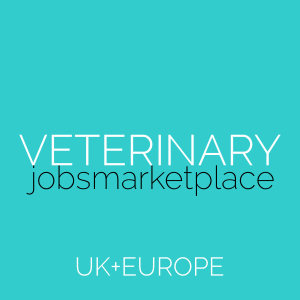
👶 Parental Leave – Crucial Tips for Returning to Work
Returning to work after a period of parental leave can be both a rewarding and daunting balancing act for veterinary professionals. Whether you’re seeking a financial boost, mental stimulation, or some actual adult conversation (or all three!), we’ve got some practical tips on getting your figurative ducks lined up for a smooth transition back into the workplace. Apply the organizational and self-care advice outlined here, and you, too, can genuinely achieve the healthy, sustainable long-term equilibrium of working and parenting that every parent wants…
Find your next job…the Fresh Way
It’s natural to feel concerned
Whilst you are a skilled, knowledgeable veterinary professional, you probably have mixed feelings about the prospect of re-entering the workforce. Many new parents understandably worry about leaving their baby in the care of someone else. Your workplace may have changed, with new staff members, drugs or clinic protocols introduced during your period of leave. And in all likelihood, you probably feel different too, with altered priorities, a constant family-related mental workload chatter, and more limited time availabilities. With some good preparation, childcare support, and consistent communication, balancing your fulfilling career with your newly enriched family life will be a juggle but not a struggle!
Refresh your professional brain
When contemplating your return to work, you may worry that your professional brain has stagnated. Don’t worry – the knowledge may be buried (under a layer of sleep deprivation and baby vomit), but it will resurface again with some gentle revision!
Aim to set aside some blocks of time for refreshing the basics before your return to work. Read over some clinical protocols (e.g., vaccination and parasite control routines). Watch some online CPD/CE webinars, such as those offered by VETgirl. Consider enrolling in an online surgery course for practical tips on common soft tissue surgeries.
Some regional veterinary associations offer structured “Return to Work” online programs (such as that offered by the Australian Veterinary Association), which give a useful overview of clinical basics and address some of the common apprehensions that can plague new parents.
In terms of actual professional practicalities, ensure a couple of weeks in advance that you have suitable work clothing that fits comfortably and facilitates activities such as pumping breastmilk at work if that’s required. Remember too, that if you suspended your veterinary registration for an extended period of parental leave, you must reactivate it so that you can legally practice.
Go easy on yourself
Veterinary professionals returning to work will generally implement the best possible care routines for their child and then throw themselves back into the workplace, leaving any self-care by the wayside.
Instead, try to take some time for self-reflection and recognize that you’ve probably had a shift in your priorities. Accept that for a while, you may not be able to work as you used to, and you may have reduced professional availability and more frequent Carers Leave absences. Endeavor to put that ever-present parent guilt aside and remember that this is all just a temporary step of the process. Consider what you want and need from your career at this stage.
Many working parents feel they are simultaneously sacrificing their family life and failing to “pull their weight” at work like they used to. Many returning veterinary professionals also feel like they’ve lost competence or mental capacity. Checking in on your mental health regularly will help you clarify and understand any tensions that arise during your return to work. Consider your time management tools and techniques. Ask colleagues for help if required. Be kind to yourself, and forgive yourself any lapses – all you can do is your best.
Set up your support network
Hopefully, you have a good support network (a partner/parents/other family/friends) in place to take up an increased share of the childcare and homecare load for your transition back to work. (As an aside, we would like to extend our sincere admiration and respect to the single-working veterinary parents out there doing the juggle on their own!).
Communication is key. Ensure everyone involved knows the childcare arrangements – what hours and days your child will attend, what equipment/clothing/food your child will need, and what the contingency plan is if your child is unable to attend daycare (or if their home carer is sick).
As well as enlisting willing family, friends, and colleagues for advice or assistance where necessary, joining a region-specific Veterinary Facebook group for parents, such as US-based DVMoms, UK-based Vet Mums (where Vet Dads are welcome too!) or Australian Vet Mums and Dads may also prove helpful. These groups can be a great source of practical tips and support for new parents during their transition back into the workplace.
It can also help to outsource some of the household work, at least in the early stages of your return to work. If you can afford it, hire some help for cleaning. Consider online shopping as a time saver. And try to batch cook and freeze meals or meal prep in advance. Your tired, post-work self will thank you!
Facilitate a smooth transition for your child
Depending on your child’s age and their upcoming childcare arrangements, you may need to gradually adjust their care routines (e.g., feeding, toileting, napping) in advance to facilitate a smoother transition into care.
If you are going to be utilizing family care or a nanny, ensure your child is familiar and comfortable with the person who will be caring for them and the carer is familiar with your child’s overall routine (e.g., nap times) – it can help to have a couple of shorter trial sessions in advance to iron out kinks in the system. If your child will be entering daycare and you can afford it, try to settle your child into the facility with a few shorter attendances in the weeks before your return to work to ease them in gently. Knowing your child is settled will help you focus on work rather than worrying about them.
If your child is breastfeeding, start getting them used to bottles of expressed milk or formula at least a month before it’s needed, as some babies can take time to adapt to this change.
Work with your workplace
A supportive, understanding workplace is key to balancing your home and work commitments and looking after your long-term mental health.
Throughout your parental leave, have open discussions with your employer about your returning to work timeline and roster expectations, as your wishes or your employer’s requirements may change during this period. A family-oriented employer will understand that it is worth supporting a valued employee through this transitional period and will aim to be flexible where possible to facilitate your needs.
Many professionals find working the same shifts week to week makes it easiest to arrange childcare. It may also help if your employer can offer you some shorter shifts (e.g., 9 am-2:30 pm) or evening/weekend shifts so you can tag-team childcare with your partner. Remember that for a while, you may have to take more Carers Leave than you would like (those pesky daycare bugs!), so it’s good to work out a contingency plan with your support network and employer as to how this will work. Whilst you are entitled to Carers Leave as a full-time or part-time employee, you may feel more comfortable if you can sometimes offer to work your colleagues’ weekend shifts in return for covering your absence.
Ideally, managers should schedule every employee a block of (hopefully paid) administrative time at the end of their shift to “tidy up” cases, write records, and perform phone calls to clients. Not only will this help keep colleagues and clients happy, but it will also assist you in getting out the door on time to see your family.
If you are still breastfeeding your child and need scheduled time off to pump at work, your employer is obligated for a set period to take reasonable measures to allow you to do this. Make yourself aware of the regional legal guidelines in regards to this so you can politely but firmly assert your rights should your workplace prove unaccommodating.
If your workplace is unable to offer the flexibility you require for a successful return from parental leave, you could consider a move to telemedicine or mobile vet work. Both roles tend to be more flexible for working parents, with telemedicine also offering the ability to work from home. Mobile end-of-life veterinary care is an increasingly appreciated field, with lots of supportive online education to support the transition into such roles.
Finding the right balance for you will help to ensure that you’re a valued veterinary professional at work and an engaged, contented parent at home.
References
- Top Tips for Returning to Work After a Baby – https://www.veterinarywoman.co.uk/2017/03/top-tips-returning-work-baby/
- Supporting working parents – https://vetpracticemag.com.au/supporting-working-parents/
- Returning to work after parental leave with confidence and clarity – https://www.bva.co.uk/news-and-blog/blog-article/returning-to-work-after-parental-leave-with-confidence-and-clarity/
- Getting back into practice – https://www.veterinary-practice.com/article/getting-back-into-practice
About Veterinary Jobs Marketplace…
We connect veterinary talent with the best veterinary jobs. Explore our Job Campaigns for GP Veterinarians, Emergency Vets, Veterinary Nurses, Technicians, and more, enriched with video insights. Find new team members using our unique Reach, Frequency, and Story strategy, now including One-to-One Outreach.
For Job Seekers: Discover your ideal veterinary jobs in cities across the UK and Europe. Register for custom Job Alerts, bringing the latest opportunities directly to your Inbox.
For Employers: Register to reach skilled veterinary professionals for your practice. From GP Veterinarians to Emergency Vets, our Job Campaigns help you find the perfect team members.
Worldwide Audience: Expand your reach internationally to the USA, Canada, Australia, New Zealand, and Asia. Our global reach will connect you to our global veterinary community.

